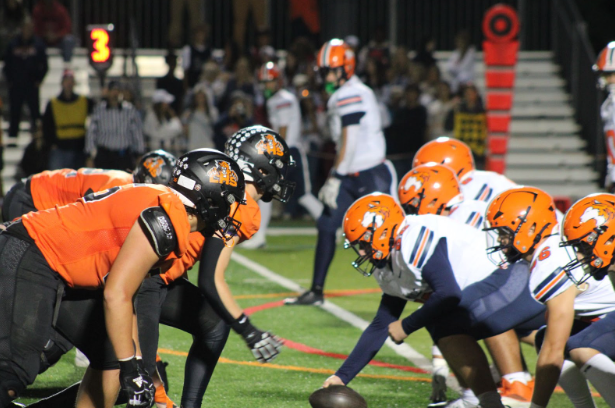In recent years, new safety measures and equipment have been implemented to help the game of football have less violent injuries and/or deaths. Despite these measures, the injuries and deaths still occur. In 2015 alone, eight players have passed away nationwide, succumbing to traumatic injuries they had on the field.
One death that hits close to home is that of Andre Smith from Bogan High School in Chicago, who was injured on the last play of an Oct. 23 matchup against Chicago Vocational High School. He managed to get up and walk off the field, but then collapsed on the sideline and was rushed to the hospital. He passed away a day later, according to his autopsy conducted by the Cook County Medical Examiner’s office, from blunt force head trauma from hits that accumulated throughout the game. Smith is the first Illinois prep football player to die from a football-related injury since 2012, per both the Chicago Tribune and Sun-Times newspapers.
Another similar incident occurred in Seattle when Highline High School wide receiver Kenney Bui was rushed to a local hospital after sustaining a head injury during a game against Evergreen last month. Three days later, he succumbed to the injury, as reported by ABC News.
Injuries that lead to a death in high school football do occur from significant hits that players receive in games, but some pass away from pre-existing conditions that they never knew they had. With the violent nature of the game, those underlying conditions have a larger chance at affecting the player.
As reported by CNN and other local news stations, in a Sept. 25 game, which was during homecoming at Warren Regional High School in New Jersey, senior quarterback Evan Murray took a nasty hit and had to be carried off the field by his teammates. Shortly then after, he collapsed on the sidelines and was taken to the hospital, where he then passed away. It was seen in a later autopsy that Murray had an enlarged spleen, and when he had taken the big hit, it easily ruptured because of its abnormal size.
From news station WFAA in Texas, an Alto High School junior, Cam’ron Matthews, suffered a seizure on the sidelines after telling his teammates in the huddle that he was feeling dizzy. He was then airlifted to a Tyler, Texas, hospital. He passed away the day after, on Oct. 16. The game against Carlisle High School from Price, Texas, was postponed because of the significant nature of the situation.
According to a 2007 study conducted in the American Journal of Sports Medicine, three times as many high school football players suffer tragic injuries (such as death and neck fractures) than college football players. In 2013, the Catastrophic Injury Center calculated that for every 100,000 high school football players, about one dies per year. There are about 1.1 million high schoolers playing the game today.
There are many reasons for high school football players still dying. Player safety costs high schools a lot of money and some cannot afford athletic trainers. According to the National Athletic Trainers Association, only 37 percent of all high schools in the United States have full-time trainers. Add that to the older equipment that some schools still use (and the fact that a teenager’s brain is still developing) and it’s apparent that death is still a possibility while playing the sport.
LHS is one of the schools inside of the 37 percent. With Head Athletic Trainer Mr. Ron Russ and two other athletic trainers on board, LHS has the necessary staff to focus on sports injuries. When a serious injury occurs, a trainer is often right there to handle the situation.
Many high schools have taken measures to try and reduce the amount of head injuries that occur. While football is still played on the high-school level, it is still a possibility that players will die because the nature of the sport is violent, a statement that many analysts, news reporters, and coaches profess. Teenagers cannot take hits like college and NFL players because they are still growing, and adults are not. Therefore, the likelihood for a high school football player passing away from a serious injury is much higher. It is why when a player does pass away from a sustained injury, it becomes national news. Not that many happen, but they still occur.









